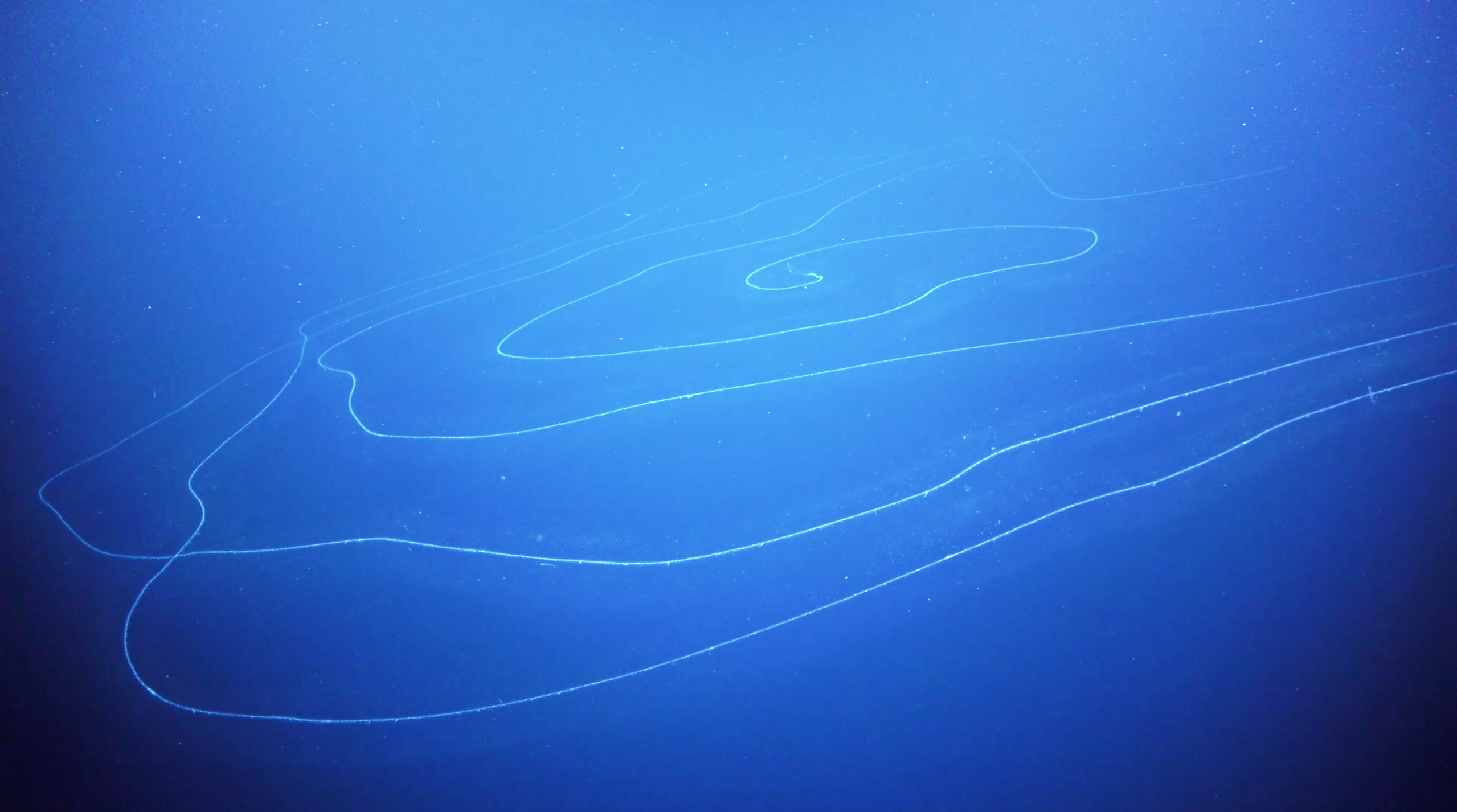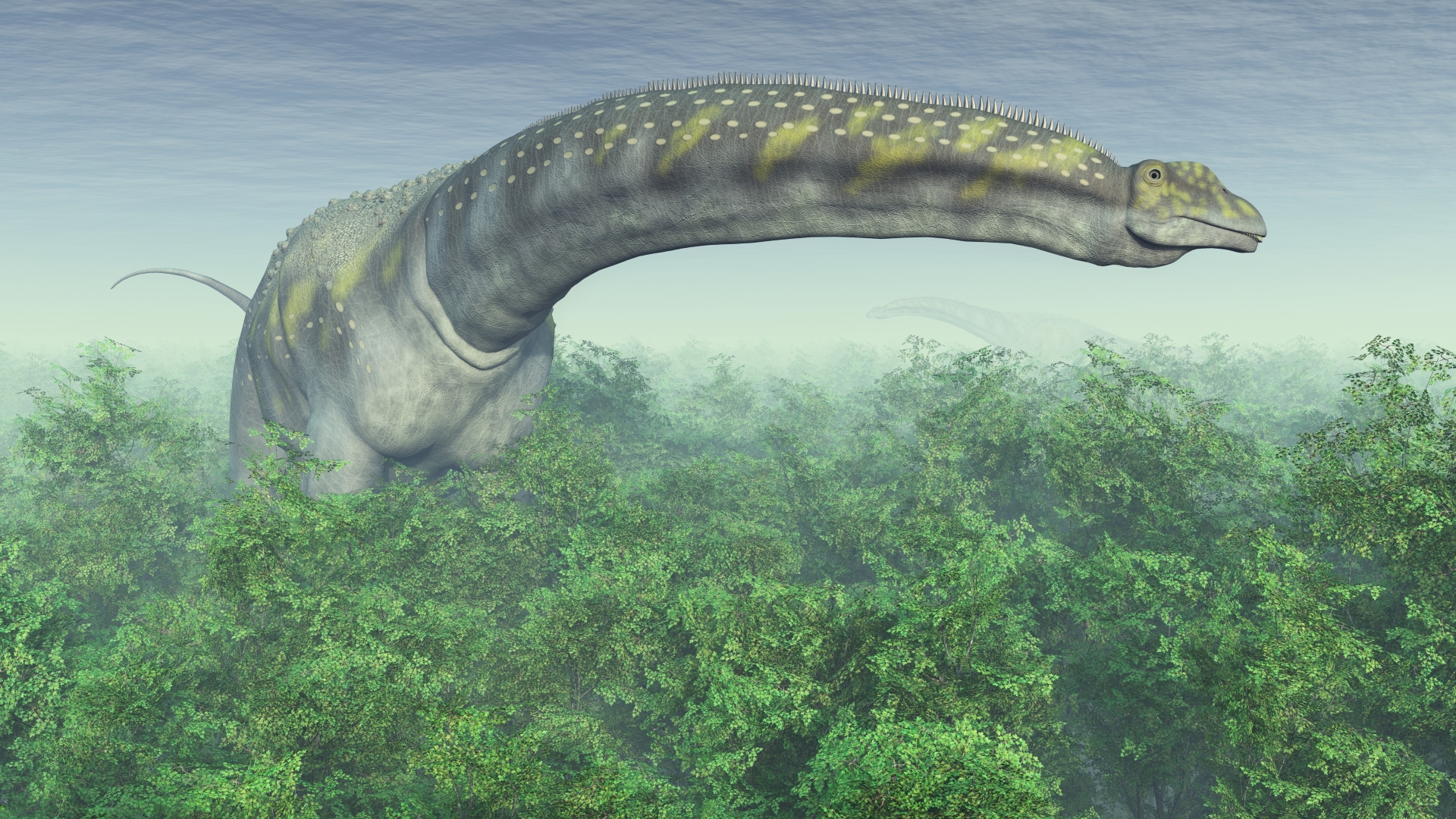Are there any giant animals humans haven't discovered yet?
Don't hold your breath on Bigfoot.

In 2020, researchers saw for the first time what may be the longest animal ever. The creature, spotted in a deep-sea canyon off Australia, was a roughly 150-foot-long (45 meters) siphonophore. Each member of this group of species is made up of lots of smaller animals called zooids, which connect to form a long, string-like colony similar to a coral but that swims freely in the ocean.
Given it took so long for humans to set eyes on this ginormous siphonophore, it raises the question, are there more giant animals humans haven't discovered yet? The answer is almost certainly yes. Scientists are still learning about life on Earth and the siphonophore is one of several giants that humans have found in recent decades.
Siphonophores live between about 2,300 and 3,280 feet (700 to 1,000 m) below the surface, according to the Monterey Bay Aquarium in California. But scientists don't always have to go to such depths to find new colossal creatures. In 2011, a previously unknown whale species washed up on a New Zealand beach. Scientists identified the giant in 2021 as a new member of the beaked whale family — a relatively unknown group of deep-diving whales that are rarely seen alive, according to Whale and Dolphin Conservation, an international charity that works to protect whales and dolphins.
Related: What's the biggest animal in the world?
While researchers are still only beginning to unlock the secrets of the deep ocean, they're a lot more familiar with large animals living on land. African bush elephants cut unmissable silhouettes on the savanna. Standing up to 13 feet (4 m) high and weighing up to 11 tons (10 metric tons), they are the largest living land animals on Earth, according to The Nature Conservancy. It's hard to imagine we could miss a massive, elephant-size creature roaming our planet.
Perhaps this is why most research into large land animals tends to lead to reclassifications rather than brand-new discoveries. For example, in 2017, researchers determined that an isolated group of orangutans on the Indonesian island Sumatra was a distinct species from other orangutans and named them Tapanuli orangutans (Pongo tapanuliensis), Live Science previously reported.
But humans already knew these orangutans existed, and at less than 5 feet (1.5 m) tall, these primates aren't exactly giants. Meanwhile, there's no physical evidence for the existence of Bigfoot, Nessie or other massive mythological monsters that are very different from what's already been identified.
Get the world’s most fascinating discoveries delivered straight to your inbox.
The largest unknown terrestrial animals tend to be dug up rather than seen alive. Humans are still chipping away at Earth's geologic history and finding previously unknown giants in the fossil record. Chief among the recently discovered behemoths is a group of supermassive sauropod dinosaurs called titanosaurs — giant, long-necked herbivores.
"We're talking about the same amount of meat walking around in one of these animals as in potentially six or seven fully grown bull African elephants," Paul Barrett, a paleontologist at the Natural History Museum in London, told Live Science.
Some of the biggest titanosaurs were discovered relatively recently in Argentina and yet are contenders for the largest terrestrial animals on record. There is some ongoing scientific debate about their sizes, but the heaviest and potentially largest of all titanosaurs was likely Argentinosaurus.
Discovered in 1993, Argentinosaurus' bones suggest that it was 115 feet (35 m) long and weighed up to 77 tons (70 metric tons), according to London's Natural History Museum. However, new size rivals are still emerging. In 2014, Patagotitan mayorum burst onto the paleontology scene in the 66-ton (60 metric tons) range and reached about 122 feet (37 m) long, Live Science previously reported. In 2021, researchers announced another titanosaur discovery that could be even bigger, but researchers have yet to fully excavate the specimen.
Related: What's the world's largest dinosaur?
Barrett thinks there will be more massive titanosaur discoveries. The rate of these finds has increased along with a broader upward trend in fossil discoveries, he said, as more paleontologists are looking in a wider variety of places than in the past.
"Historically, most of that work was done in places where the people publishing were based — so, in North America and Europe," Barrett said. "In the last 30 to 40 years, that knowledge base has spread much more widely internationally."
Despite this increased rate of discovery, the evidence for giant extinct beasts isn't always forthcoming. Argentinosaurus, the top seed for the largest dinosaur, is known only from about a dozen bones.
"It's actually quite difficult to become a fossil in the first place," Barrett said. For an animal to be preserved in rock, a lot of things have to go right. For example, the animal's bones need to be completely buried quickly in the right conditions, such as mud or sand, and they cannot be eaten or taken away by a predator or erode over time.
"If you're a sauropod and you're 30 meters [100 feet] long, your chances of getting buried in one go are actually quite low," Barrett said. "There's always probably going to be a bit of you sticking out."
Scientists don't have a theoretical maximum size for a land animal. If you include marine animals, blue whales (Balaenoptera musculus) are the heaviest animals on record, with a maximum weight of at least 150 tons (136 metric tons). However, they don't have to hold their weight up on land as titanosaurs did.
There must be a limit to how big animals can grow and still support themselves under the weight of gravity and get enough energy to keep their massive bodies moving. Barrett said he would be very surprised to see dinosaur discoveries make a big jump up in terms of size, but paleontologists have been surprised before.
"I don't want to say that we're close to that limit, because tomorrow someone could find something even bigger," Barrett said.
Originally published on Live Science.

Patrick Pester is the trending news writer at Live Science. His work has appeared on other science websites, such as BBC Science Focus and Scientific American. Patrick retrained as a journalist after spending his early career working in zoos and wildlife conservation. He was awarded the Master's Excellence Scholarship to study at Cardiff University where he completed a master's degree in international journalism. He also has a second master's degree in biodiversity, evolution and conservation in action from Middlesex University London. When he isn't writing news, Patrick investigates the sale of human remains.


